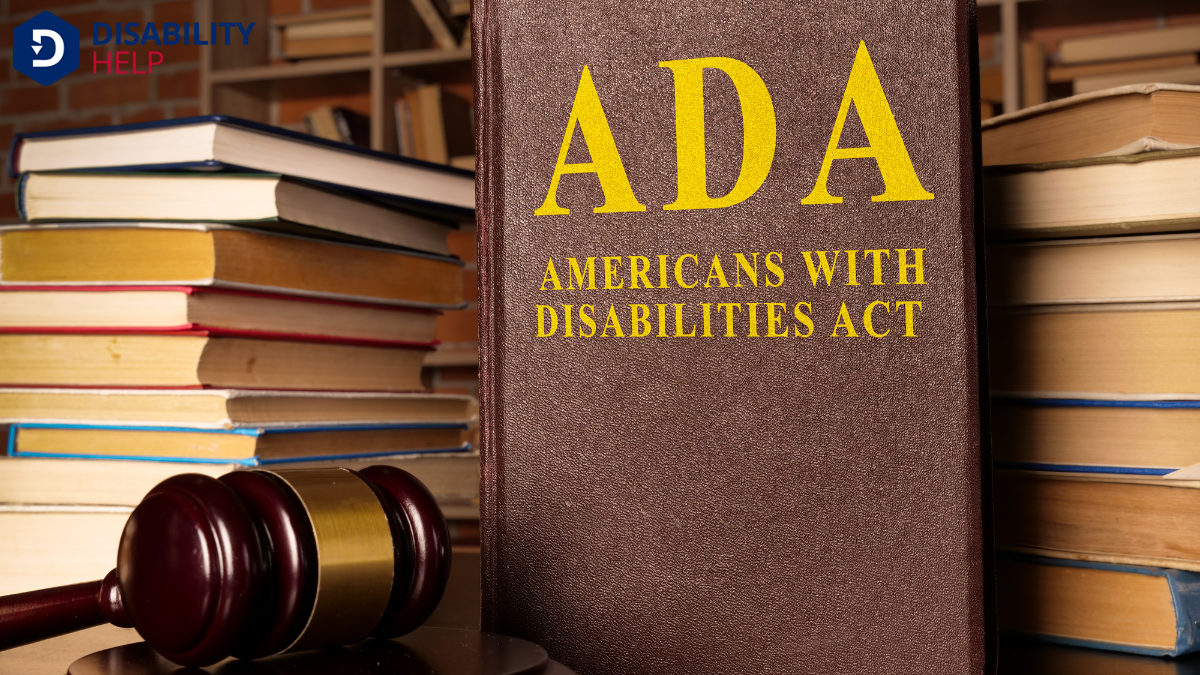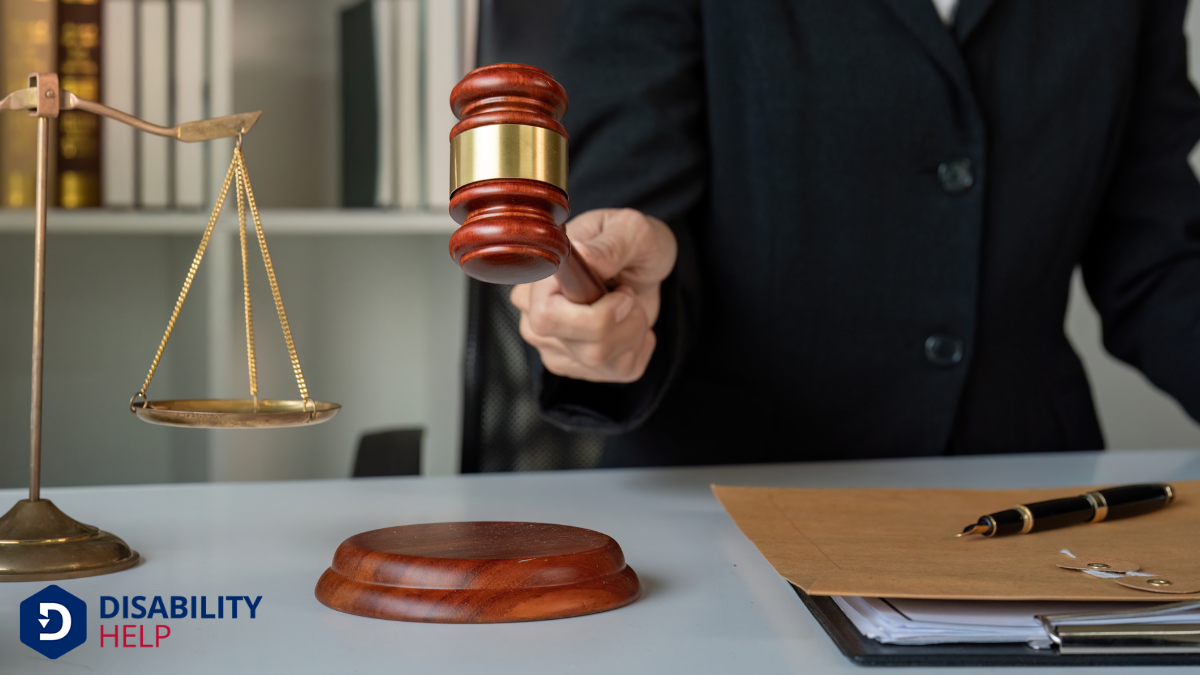As a society, we must ask ourselves: can disabled individuals truly seek justice when faced with discrimination? The answer lies within the protective framework of the Americans With Disabilities Act (ADA)A U.S. law that prohibits discrimination against individuals with disabilities in all areas of publi... and other legal avenues. These laws empower those with disabilities to challenge unfair treatment in employment, public services, and education. How do these legal provisions work, and what steps can individuals take to assert their rights effectively? Let's explore these essential questions together.
Key Takeaways
- Disabled individuals can sue for discrimination under the Americans With Disabilities Act (ADA).
- Filing a complaint with the Equal Employment Opportunity Commission (EEOC) is a starting point for legal action.
- Pursuing a lawsuit is an option if discrimination occurs in public spaces or services.
- AdvocacyThe act of arguing in favor of, supporting, or defending the rights and interests of individuals or ... groups and legal aid organizations offer guidance and resources for legal proceedings.
- Documenting instances of discrimination strengthens the case when suing for disability discriminationUnfair treatment of individuals based on their disability in areas such as employment, education, an....
Understanding Disability Discrimination
When we explore disability discrimination, it's crucial to recognize how it impacts individuals on a daily basis. This form of discrimination occurs when people with disabilities are treated unfairly or denied the same opportunities as others.
We see it in workplaces, schools, and public spaces, where barriers—both physical and societal—limit participation and access. Discrimination isn't always overt; sometimes, it's the subtle, ingrained biases that perpetuate exclusion.
Understanding this issue involves acknowledging the diversityThe inclusion of individuals from a wide range of backgrounds, including people with disabilities. of disabilities and how each person’s experience can vary. We must ask ourselves: Are environments accommodating? Are policies inclusive?
Key Provisions of the Americans With Disabilities Act (ADA)

Enacted to protect the rights of individuals with disabilities, the Americans With Disabilities Act (ADA) serves as a cornerstone of anti-discrimination legislation. It guarantees equal opportunities in several key areas.
First, employment: employers must provide reasonable accommodationsModifications or adjustments in healthcare settings to support patients with disabilities. and can't discriminate based on disability.
Second, public services: state and local governments must make their programs and services accessible.
Third, public accommodations: businesses open to the public must remove barriers when possible.
Fourth, telecommunications: phone and internet companies must provide accessible services.
Finally, transportation: public transit systems must be accessible to individuals with disabilities.
Together, these provisions aim to create an inclusive society where everyone has the opportunity to participate fully. Understanding these key provisions helps us recognize the ADA's impact on daily life.
Identifying Instances of Discrimination
Understanding the key provisions of the ADA equips us with the tools to recognize instances of discrimination against individuals with disabilities. Discrimination can occur in various settings, such as workplaces, schools, or public spaces.
We should be alert to practices that unfairly exclude or disadvantage someone because of their disability. For instance, if a qualified individualA person who meets the necessary skills, experience, and other job-related requirements and can perf... is denied employment solely due to their disability, it's a red flag.
Similarly, if reasonable accommodations are refused, such as accessible facilities or modified schedules, this may indicate discrimination. We must also notice subtler forms, like derogatory remarks or unequal treatment compared to others.
Legal Options for Disabled Individuals
Maneuvering the legal landscape can be intimidating, but several options empower individuals with disabilities to seek justice and remedy discrimination.
We can start by filing a complaint with the Equal Employment Opportunity Commission (EEOC) or a similar state agencyThe capacity of individuals with disabilities to act independently and make their own choices.. They investigate claims and may facilitate mediation or legal action.
Another avenue is pursuing a lawsuit under the Americans with Disabilities Act (ADA), which prohibits discrimination in public spaces, services, and housing.
Seeking assistance from advocacy groups or legal aid organizations can provide guidance and resources.
Importantly, documenting instances of discrimination and gathering evidence strengthens our case.
The Role of Employment Discrimination Claims

When it comes to employment discrimination, we've legal protections that help us address unfair treatment at work.
By understanding the process of filing a complaint, we can take steps to assert our rights effectively.
It's important to know that potential remedies, such as reinstatement or compensation, are available to support us in seeking justice.
Legal Protections Available
Although traversing the legal landscape can be intimidating, there are robust protections available for disabled individuals facing discrimination in employment.
We've laws like the Americans with Disabilities Act (ADA) that guarantee fair treatment. The ADA prohibits employers from discriminating against qualified individuals based on disability. It requires reasonable accommodations unless they cause undue hardshipA legal concept that refers to significant difficulty or expense imposed on an employer or service p... to the business.
Additionally, the RehabilitationThe process of helping individuals with disabilities achieve and maintain their optimal physical, se... Act applies to federal employment and organizations receiving federal funding, reinforcing these protections.
We must remember that these laws empower us to challenge unfair practices and seek justice. Understanding our rights under these laws encourages us to stand against discrimination.
It’s vital to stay informed and assertive, making sure that workplaces remain inclusive and equitable for everyone. Let’s embrace these protections confidently.
Filing a Complaint Process
To effectively address discrimination, we must understand the process of filing a complaint. First, we need to gather evidence that supports our claim of discrimination. This includes documents, emails, or witness statements that back our allegations.
Once we've our evidence, we can file a charge with the Equal Employment Opportunity Commission (EEOC) or a similar state agency. It’s essential to file within the time limits, usually 180 or 300 days from the incident, depending on state laws.
We'll receive a Notice of Right to Sue from the agency if they can’t resolve our complaint. At this point, we've the opportunity to take legal action in court. By knowing these steps, we empower ourselves to challenge discriminatory practices effectively.
Potential Remedies Offered
After filing a complaint, understanding the potential remedies available can guide us in seeking justice for discrimination claims.
Remedies for employment discrimination may include reinstatement, back pay, or compensation for emotional distress.
We might also see changes in workplace policies, which can prevent future discrimination.
It's crucial to know that these remedies aim to restore us to the position we'd have been in without discrimination.
Navigating Discrimination in Education
When we consider the challenges disabled students face in education, it's essential to understand their legal rights and the accommodations they should receive.
We must guarantee that educational institutions address any biases that may hinder equal accessThe principle that all individuals, including those with disabilities, should have equal opportunity....
Together, let's explore how we can support these students in advocating for their rights and achieving a fair educational experience.
Legal Rights in Education
While traversing the educational landscape, students with disabilities often face unique challenges, and understanding their legal rights is crucial. Together, we must recognize that laws like the Individuals with Disabilities Education Act (IDEA) and Section 504A provision of the Rehabilitation Act of 1973 that prohibits discrimination based on disability in p... of the Rehabilitation Act protect students from discrimination.
These laws guarantee access to a free and appropriate public education in the least restrictive environment.
We owe it to ourselves to be informed about these rights so we can advocate effectively for those in need. If schools fail to comply, parents and students can pursue resolution through mediation, hearings, or even legal action.
Accommodations for Disabled Students
Ensuring that disabled students receive appropriate accommodations is essential for fostering an inclusive educational environment. We must prioritize understanding each student's unique needs to eliminate barriers to learning. Accommodations can range from extended time on tests to providing assistive technology or tailored instructional methods. By implementing these measures, we empower students to reach their full potential.
It’s our collective responsibility to advocate for these changes, ensuring schools comply with legal standards like the Individuals with Disabilities Education Act (IDEA) and Section 504 of the Rehabilitation Act.
We can create a supportive learning atmosphere through open dialogue with educators, students, and families. Let’s remember that when we embrace diversity in learning, we not only support disabled students but also enrich the entire educational experience for everyone.
Addressing Institutional Bias
Although progress has been made, institutional bias in education still poses significant challenges for disabled students. We must recognize these hurdles to effectively address them.
Bias often manifests subtly, influencing policies, classroom dynamics, and resource allocation. It’s essential that we advocate for environments where disabled students feel valued and included. We can start by educating ourselves and others about the diverse needs of disabled students and actively questioning existing practices that may unintentionally marginalize them.
Let’s push for thorough training for educators, ensuring they’re equipped to support all learners. By fostering open dialogue and building robust support networks, we create a more inclusive educational landscape.
Together, we can dismantle institutional bias and champion equality, ensuring every student has the opportunity to succeed.
Addressing Discrimination in Public Services
When it comes to public services, addressing discrimination against disabled individuals isn't just a legal obligation—it's a moral imperative.
We must guarantee that public entities like transportation, education, and healthcare are accessible and equitable for everyone. It's about more than ramps and elevators; it's about recognizing dignity and providing equal opportunities.
We need to advocate for policies that mandate accessibilityThe design of products, devices, services, or environments to be usable by people with disabilities.... and train public service providers to understand and combat discrimination.
By doing so, we foster an inclusive society where disabled individuals can participate fully without fear of unfair treatment.
Let's not forget that change often starts with awareness. By educating ourselves and others, we can identify and challenge ableismDiscrimination or prejudice against individuals with disabilities. in public services, guaranteeing that everyone's rights are respected and upheld.
Landmark Court Cases Impacting Disability Rights

These cases highlight our ongoing journey toward equality,
ensuring disabled individuals receive the rights and opportunities they deserve.
The Importance of Legal Advocacy and Support
Legal advocacyThe use of legal means, including litigation and policy work, to advance the rights of individuals w... and support play an essential role in protecting the rights of disabled individuals, ensuring they aren't left to navigate complex legal systems alone.
We need to understand how advocacy bridges the gap between individuals and justice. It empowers us, providing knowledgeable allies to stand by our side.
Here’s how legal advocacy and support make a difference:
- Guidance: Experts help us understand our rights and the legal process.
- RepresentationThe way people with disabilities are depicted in media, culture, and politics, often influencing pub...: Skilled advocates speak for us in legal settings, ensuring our voices are heard.
- Resources: Access to valuable information and support networks.
- Confidence: Knowing we've knowledgeable support boosts our confidence in pursuing justice.
Frequently Asked Questions
Can Emotional Support Animals Be Considered a Reasonable Accommodation?
We often wonder if emotional support animals qualify as reasonable accommodations. They can be, depending on specific circumstances and needs. It's essential to communicate with professionals to guarantee compliance with relevant laws and support inclusionThe practice of creating environments in which any individual or group can be and feel welcomed, res... effectively.
How Does Disability Discrimination Differ Internationally?
We recognize that disability discrimination laws vary worldwide. Each country's legal framework influences how rights are protected. Let's explore these differences and understand how international contexts shape experiences of people with disabilities.
Are There Any Exceptions to the Ada's Provisions?
We might wonder if exceptions exist in the ADA's provisions. They do. Not all employers or situations are covered. For clarity, we should explore specific exemptions, ensuring we're well-informed and advocating effectively for disability rightsThe legal and human rights afforded to individuals with disabilities, often the focus of advocacy an....
What Is the Process for Filing a Discrimination Complaint With the EEOC?
To file a discrimination complaint with the EEOC, we first gather evidence, then submit a charge online, by mail, or in person. They investigate and decide on action. It's essential to meet their deadlines.
Can Non-Disabled Individuals File a Lawsuit on Behalf of Disabled Individuals?
We can file a lawsuit on behalf of disabled individuals if we're legally authorized, like through guardianshipA legal relationship where a guardian is appointed to make decisions for an individual who is deemed... or power of attorneyA legal document that gives one person the authority to act on behalf of another, often used when an.... It's essential we consult a lawyer to guarantee we're following the correct legal procedures.
Conclusion
In our journey to understand and combat disability discrimination, we've explored the key provisions of the ADA and how they empower us to identify and address unfair treatment. By knowing our legal options, whether in employment, education, or public services, we can stand up for our rights. Landmark court cases and advocacy groups remind us that we're not alone in this fight. Let's continue to support each other and seek justice whenever discrimination occurs.






